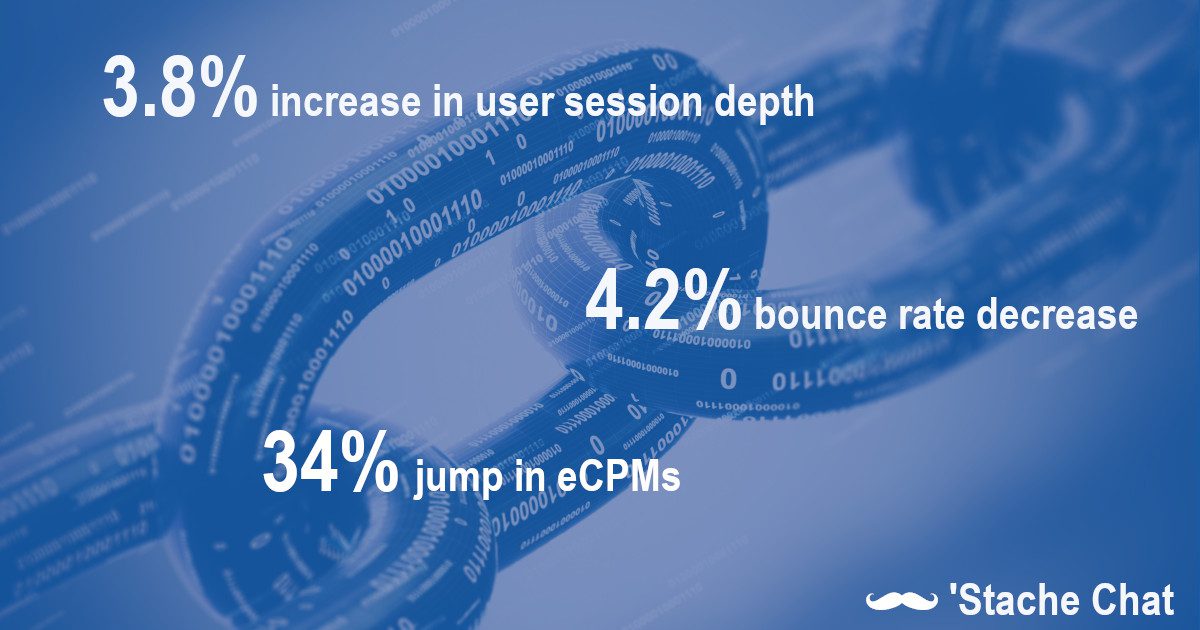
Gavin Dunaway shares a study in which removing sub-par vendors drives a 3.8% increase in session depth and a 34% improvement in eCPMs
A scandalous report about a notorious politician seemed to be omnipresent on social media feeds the other day. But there was also a great deal of commentary about where the story was published: a publisher itself notorious for overwhelming users with ads of all shapes, sizes, and formats—many of them of questionable quality.
How bad is this ad experience? It became a joke alongside sharing the (scandalous) story. “I hope my computers’ fan doesn’t burn out before I finish reading this story.” Another post compared navigating the publisher’s ad landscape to Tom Cruise swiping away screen after screen in the sci-fi film Minority Report. (To be honest, that’s a better comparison than the purposefully dystopian advertising scene in that movie.)
As Internet users, how many times do we land on a page and are utterly repelled by the ad experience? Sometimes we remember a site’s name simply because we don’t want to venture back there—and get another terrible ad experience.
“We noticed a 3.8% rise in pageviews per user and a 4.2% drop in bounce rate.”
I’ve been in this boat many a time: a tempting link shows up, but I hesitate to click when I see the URL—not because the publisher’s content is subpar, but because the ad experience is likely to turn my stomach.
These reactions prove anecdotally that bad ads and bad ad experiences decrease engagement. But since digital media is the most measurable medium ever, anecdotal data doesn’t cut it. How do we quantify this? Show that it’s true with data.
In the UX Lab
The Media Trust ran a little experiment last year with a tier 1 publisher onboarding our Media Filter creative blocker and our Digital Vendor Risk Management (DVRM) platform. To judge our products’ impact on user experience, we worked with the publisher to measure numerous metrics (e.g., page load, site analytics) on two major properties for two weeks pre-implementation and then two weeks after.
As Media Filter swatted away thousands of malicious ads, The Media Trust used DVRM to help the publisher identify which vendors were causing the biggest issues with latency and build policies for detecting and remediating load time and heavy ad violations caused by vendors.
“Both properties saw increases in effective CPMs of 21% and 34% respectively.”
In that two week period, we cut down average page load time for the properties by 2.5%. Examining Google Analytics, something else caught our attention—while sessions per user increased slightly, we noticed a 3.8% rise in pageviews per user and a 4.2% drop in bounce rate. On top of that, both properties saw increases in effective CPMs of 21% and 34% respectively.
Backed Up by Data
Most Internet users have come to accept cringeworthy ad experiences as the norm because on some level we understand that display (and some video) ads are cheap. Publishers need to offer as many placements as possible to keep the lights on. If I had a nickel for every time I heard someone proclaim, “The ad-driven publishing business is broken!” I’d pull in better revenue than most digital publishers.
Factoring user experience into revenue optimization is a near Herculean task. It seems logical that a cleaner user experience and less bad ads would lead to increased audience engagement—which would improve revenue. Finding the data to back up that assertion ain’t easy—but The Media Trust is tracking it down.



